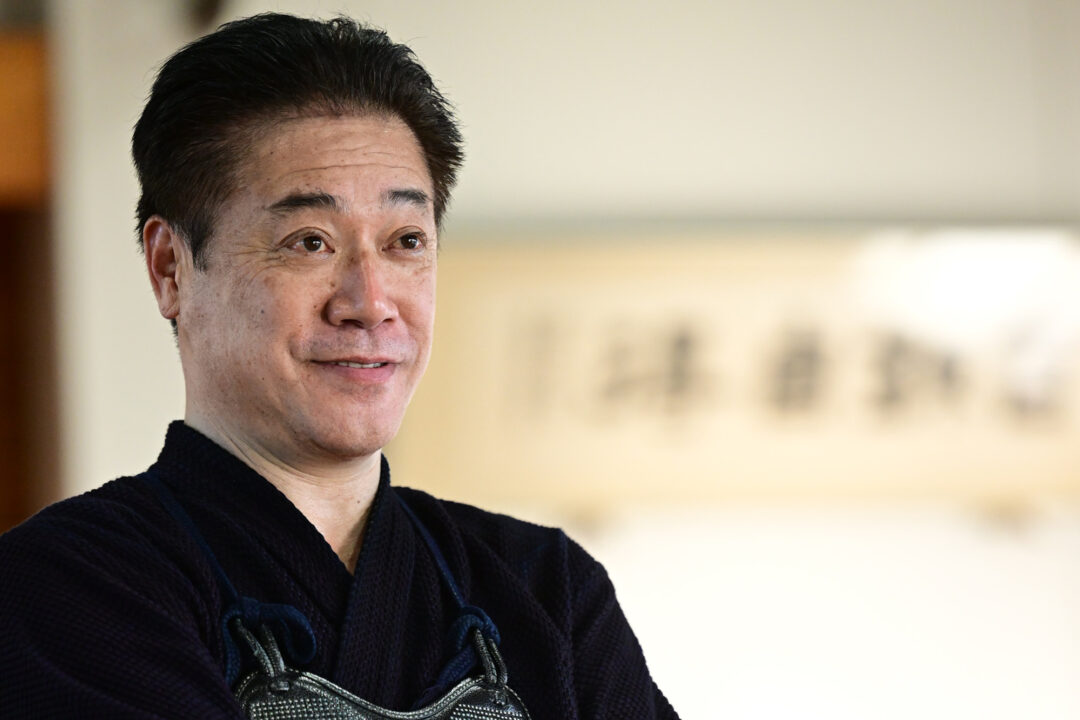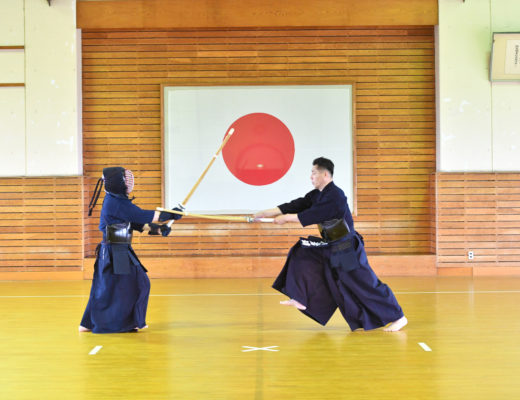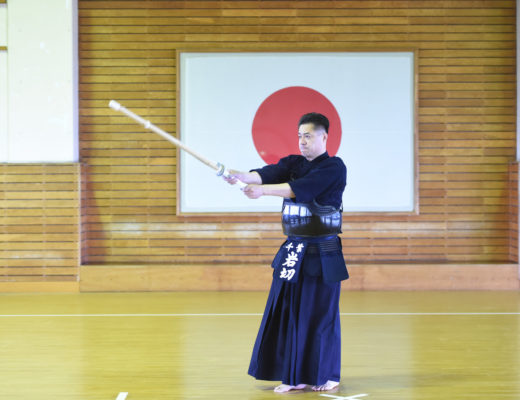2024.1 KENDOJIDAI
Photography: Nishiguchi Kunihiko
Translation: Pepijn Boomgaard
International Budo University places emphasis on the acquisition of a correct Kamae in order to help their students become good instructors in the future. The left fist is always kept in the center, and a satisfying Ippon is struck from a correct Kamae. We spoke to coach Iwakiri about his teaching style.
Iwakiri Kimiharu (Kyoshi 8th Dan)
Born in 1966 in Miyazaki prefecture. Went to Takachiho High School and International Budo University. After graduation, he became a teacher at International Budo University. His achievements include participating in the All Japan Tozai Taiko Taikai the Kokutai, the All Japan Teacher Tournament, and the All Japan Interprefecture tournament. Currently, he is a professor at International Budo University and the coach of the university’s kendo club.
Kamae is made up of the intangible “Kigamae”* and the tangible “Migamae”.* When you start Kendo, the first things everyone is taught are how to hold the Shinai and how to do Fumikomi. When facing an opponent, having a good Kamae is the foundation of Kendo and Seme is what breaks the 50/50 equilibrium.
I was part of the second batch of students to enter International Budo University and remained there as an assistant after graduation. I had the opportunity to study under the guidance of the first chairman, Komorizono Masao. He told us that in Kamae, our left hand should be fistful lower than our navel. By squeezing down the left fist, you can control your Ki and breathing, which tend to rise as you face an opponent.
In general, whether someone’s Kamae is firm or not is based on the preparation of their left hand, which allows someone to take the initiative. This teaching does not apply only to high-ranked practitioners, but is required of people of all ages. When assuming Kamae, we repeatedly tell the students that the left hand should be one fist below the navel in order to have them remember.
Kamae cannot be overlooked when aiming to practice correct Kendo. If the Kamae is not proper, the subsequent Seme and strikes will also not be proper. Correct Kamae is what allows one to correctly use their body and Seme to take the center.
Many of our students become teachers or youth instructors at local communities. Instructors must be able to pass on correct Kendo and not just teach how to win. I always tell my students that they should be looking for ways to win. Without losing your Kamae, break your opponent with Seme and strike. This is the core of Kendo, and has been the foundation since the opening of International Budo University.
The students only have four short years. During that time, they need to create a system that can be used in their future. If they can see this, they will have a foundation to return to when they have doubts after graduation. I believe that it is our duty as university instructors to help them create that path.
Take Kamae focussing on the center line from your brow to your abdomen
The rest of this article is only available for Kendo Jidai International subscribers!





